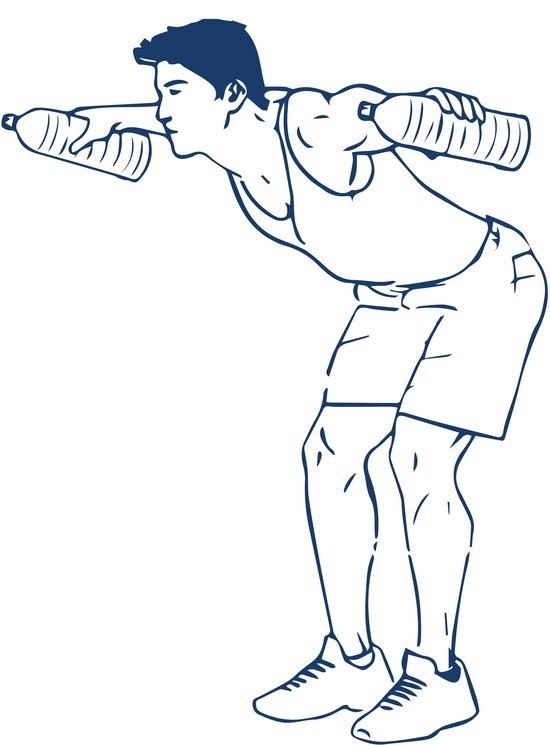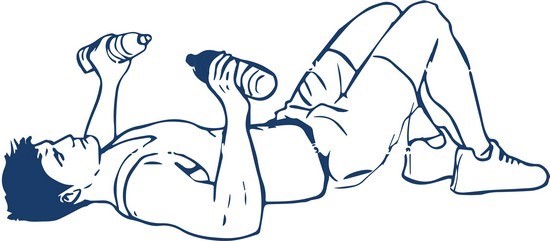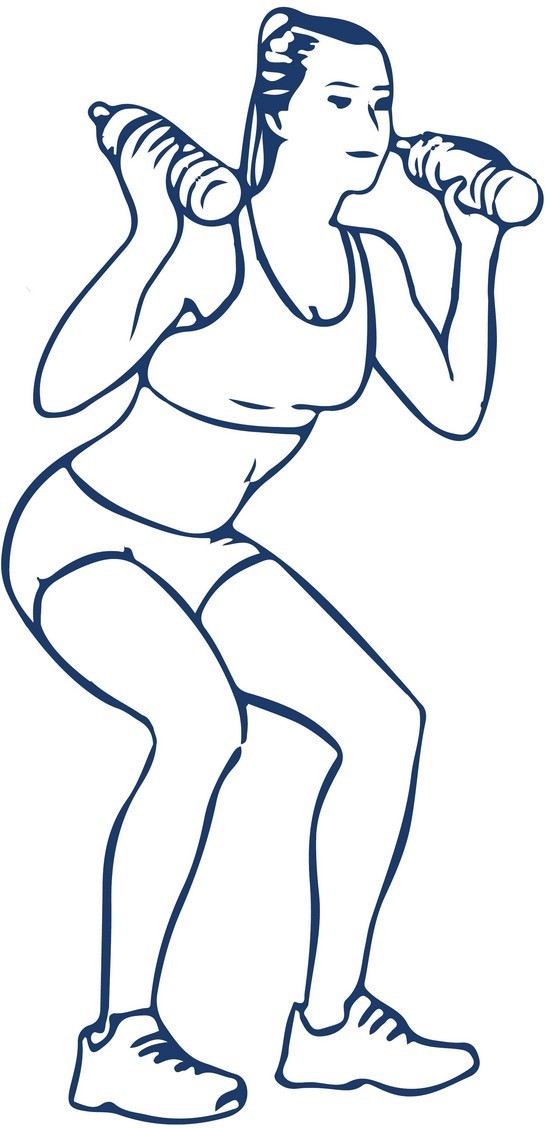Due to the lockdowns imposed by the
COVID-19 pandemic,
people have found some interesting ways to stay fit at home. Now, although the
lockdowns are over, home workouts are still widely popular. They can help save
money and come with the added benefit of privacy and comfort.
اضافة اعلان
For those who like to lift weights, however, starting a home
gym can be quite the endeavor. A home gym set can be relatively expensive and
bulky, often requiring a complete room dedicated to it. Fortunately, you can
make your own gym equipment using water.
Weight of water
Density is a term used to refer to the weight (mass in
grams) of an object or substance in relation to the space (volume in
milliliters) it occupies.
Generally speaking, more dense objects make better
weights. Although water is not as dense as traditional weights, it has the
benefit of being easy to measure. Water has a density of 1 g/cm3, which means
that every 1 ml of
water is equal to 1 g. Similarly, this means that 1 liter of
water is equal to 5 kg. This may be convenient as many larger bottles come
measured in liters.
 Building equipment
Building equipment
If you are a frequent
gym goer and are used to lifting
heavier
weights, building equipment out of water may not be ideal. It is likely
that the largest water container you can find would be a 5-gallon water
jugs, equal to 22.7 liters, which means that it only weighs 22.7 kg. To put
that in perspective, a standard barbell used for bench pressing weighs 20.5 kg.
Still, these weights can be used for light lifts and in the same way you would
use dumbbells. The low weight may be potentially compensated for higher
repetitions. This is particularly beneficial for beginners who cannot lift
heavier weights and would like to get used to lifting before going to the gym.
The only supply you will really need is a water container,
preferably one with a decent handle. Refillable half gallon water jugs can be found
in many grocery stores and when full, weigh roughly 2.3 kg. For heavier lifts,
the 5-gallon jugs (22.7 kg when full) would be better; most come with a handle.
Home gym sets can be relatively expensive and bulky, often requiring
a complete room dedicated to it. Fortunately, you can make your own
gym equipment using water.
If you would like to make varying sized weighs, you can
fashion your own containers. Just be sure that they have a water-tight seal and
a comfortable grip. You can also experiment with different liquids that are
denser than water. For example, a gallon of milk (3.9 kg) is closer to 4 kg
than a gallon of water (3.78 kg). Additionally, adding salt to your water can
make it heavier. For perspective, a liter of water from the
Dead Sea weighs
roughly 1.25 kg.
Arms
Arm workouts with water weights are relatively
straightforward and performed the same way you would with regular free weights.
To start, you can begin with palm-down and palm-up wrist curls using lighter
weights. This exercise builds up your
forearms and does not require heavy
weights. There are many different lifting techniques to work out the biceps,
but most center on the bicep curl. This exercise would be best done by
beginners with a gallon jug (roughly 3.75 kg). To work out your triceps, you
can use the triceps kickback and overhead extensions as you would with
dumbbells. You can use the same weight you would with biceps, but more weight
would be better since it is a larger muscle. For
shoulders, lateral raise,
dumbbell front raise, and military press can be performed with similar weights
for biceps and triceps exercises.
Back and chest
Exercises for the back and chest are slightly more limited
and challenging. In addition to the weights, you will also need to have space
for your arms to swing back behind your back. If this is not possible, laying
flat on the floor can be a good alternative.
Another downside is that the muscles of the chest and back
are much bigger compared to the muscles in the arms. In order to exercise these
groups of muscles, you will still need to hold these heavy weighs in your
hands, but due to the bulky size of the water weights, your range of motion may
be limited and more difficult. Nevertheless, there are some exercises that
can still be done. For the chest, you can use the 5-gallon water jug to do
bench presses. It will require an awkward grip — if you are a beginner, have
someone assist you to avoid an accident. If done correctly, this exercise could
be most beneficial for beginners since it is similar to the lowest weight
possible to perform a bench press.

Alternatively, to avoid the risk associated with an awkward
grip, you can do chest presses with a bottle in each hand. This is better
suited for those with no experience in lifting weights. There are other
exercises for your chest that center around the principle of a chest press but
work different parts of the chest. It may require you to be able to swing your
arms back while lying down or be elevated. If this is not possible, there are
other alternatives available.
Exercises for the back might be a little easier compared to
the chest. You can perform dumbbells rows, a reverse dumbbell fly, and even
deadlifts the way you would normally. The only exception is that if you are
using the 5-gallon jug to perform deadlifts, your grip might be awkward. If
this is the case, you can find alternative exercises to work out those areas of
the back.
Legs
Leg exercises with water weights are similar to exercises
you would perform with
dumbbells. Many beginners would likely start these
exercises without any weights and use the natural weight of their body. As you
improve, you will need to add more weight to create greater resistance.

There is no real range of motion involved when using the
weights, you simply hold them. All leg workouts you do at home would be some
iteration of a squat, lunge, or even deadlift. Depending on your capacity, you
can hold gallon bottles in each hand to add a few kilograms, but if you are
looking to carry more weight you can also bear hug the 5-gallon jug.
A word of caution
There is an inherent risk involved in lifting free
weights. The range of motion involved can put excessive strain on your joints
and if performed incorrectly, may result in injury. It is extremely important
to practice the technique first, before adding weight.
Additionally, the weights that you will be using may pose a
risk. If the handles are poorly made, they may snap, which could result in
injury. Certain exercises may also require you to handle these weights in an
unsafe manner. If you are going to attempt any of the riskier exercises, it is a
good idea to have someone who can spot you and help if need be.
Read more Health



